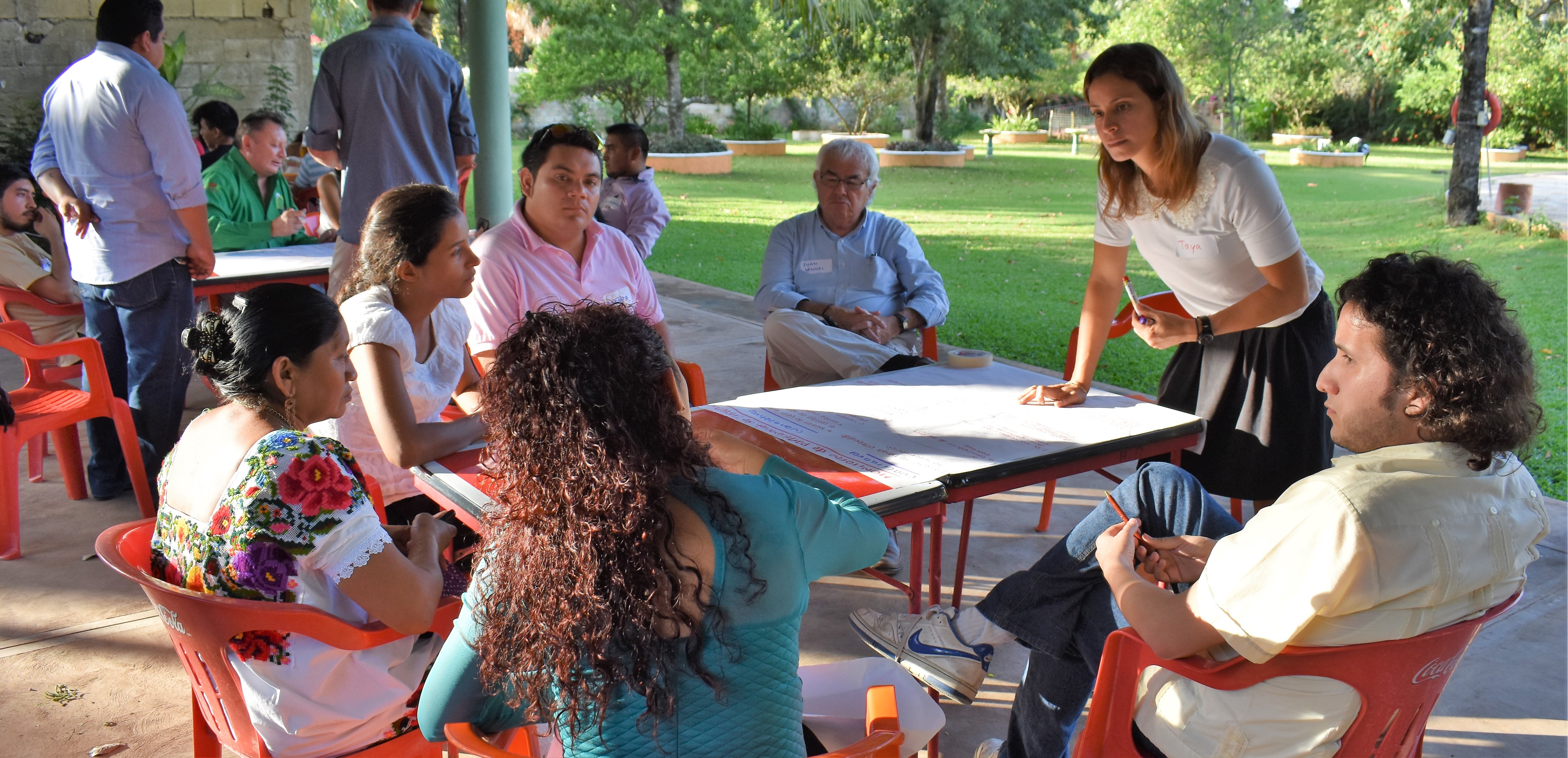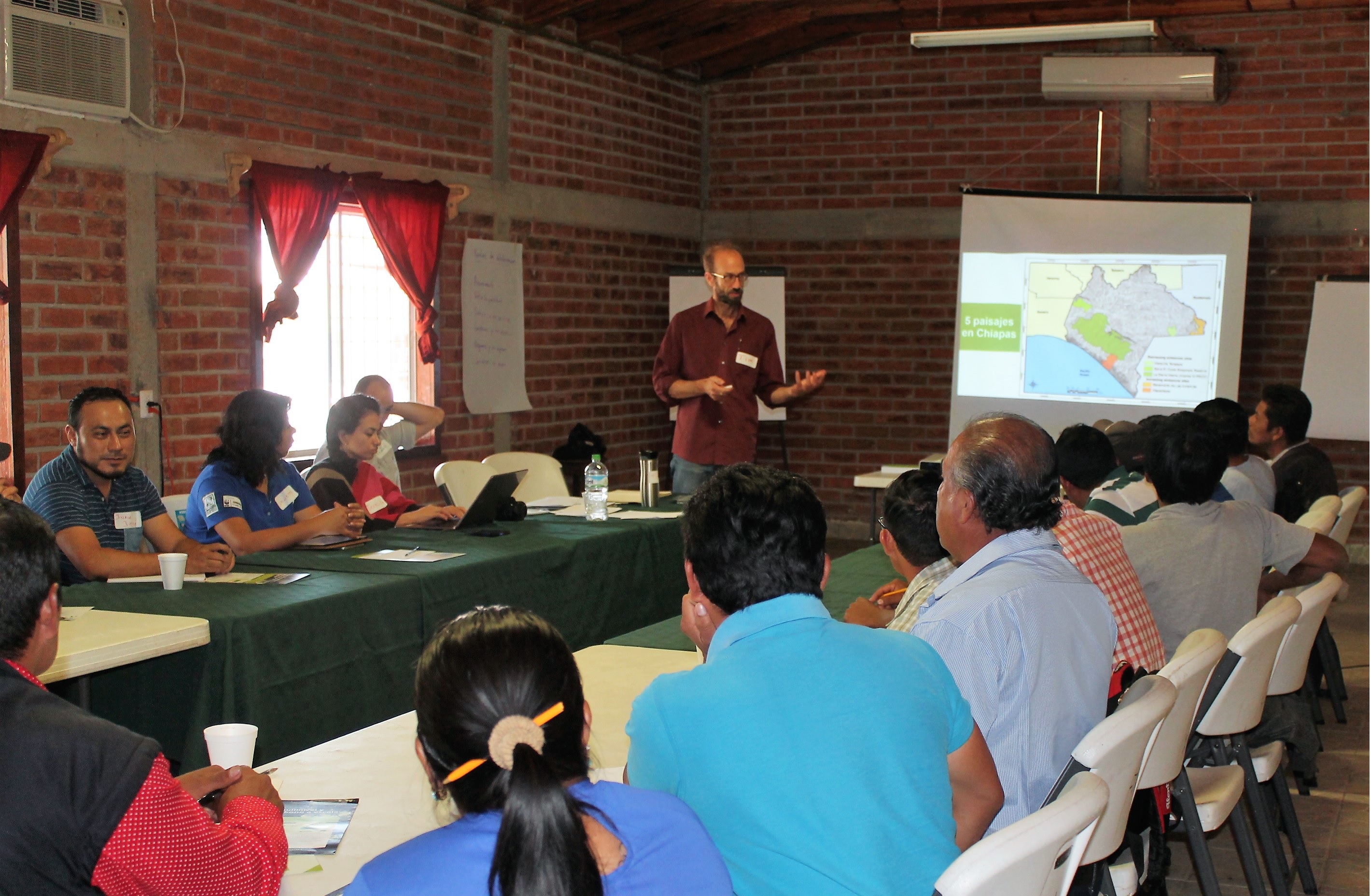The IKI-funded CIFOR project “From Climate Research to Action under Multilevel Governance: Building Knowledge and Capacity at Landscape Scale” ran from 2014 to 2018 in four countries: Mexico, Peru, Indonesia, and Vietnam. The project aimed to improve the understanding of, and ability to take into account, landscape level trade-offs and the governance and distributive implications of technical decisions and measurement, reporting and verification (MRV) systems. It was aimed at international, national and subnational REDD+ government stakeholders, and other key partners, to improve their ability to reach efficient, effective and equitable (3E) multi-stakeholder agreements regarding the design of REDD+ or other low-carbon development strategies.

Key themes:
- The multilevel governance context and how the relationships between different actors shape land use and land use change (LULUC)
- The effects of international regimes, including agriculture, on national LULUC decisions and policy
- Multi-purpose MRV, the stepwise approach and subnational MRV
- Landscape level tradeoffs, tools and scenario analysis
- Innovative multilevel governance initiatives on the subnational level.

The governance results demonstrate the failure to transmit information both upwards and downwards in a multilevel structure; deficits in personnel, funding and decision-making power at subnational levels; incentives and other decisions shaped by personal and political relationships rather than established criteria; an updated legal framework which faces a lack of monitoring and law enforcement; very different perspectives on priorities, equity, tradeoffs, including issues of rights; contradictions in the state’s own goals (vertically and horizontally); and the need to manage the interests and actions of powerful actors. Despite tensions over roles and responsibilities, subnational governments are engaging in important land-use debates and local decision making as new opportunities and innovations in multilevel governance emerge.

Greater coordination and collaboration are often presented as a solution but often failing to understand fully the underlying interests and dynamics that prevent such coordination from occurring. The results suggest the need for much greater flexibility in top-down models and particularly the need to understand, respect and integrate bottom-up (grassroots and subnational government) perspectives and approaches.
The full list of publications under CIFOR’s Global Comparative Study on REDD+ can be found at https://www.cifor.org/gcs/. All our publications related to Mexico (with Spanish translation available or in process) can be found at: https://www.cifor.org/gcs/modules/multilevel-governance/mexico/
2018 publications with global comparative results including Mexico:
Can multilevel governance transform business-as-usual trajectories driving deforestation? Lessons for REDD+ and beyond. Larson et al. 2018 provide an infobrief presenting overarching governance findings.
What roles do sub-national governments play in Nationally Determined Contributions? Between rhetoric and practice in REDD+ countries. Sarmiento et al. 2018 review the NDCs of 60 “REDD+ countries” to examine to what extent a role for subnational governments is considered and find that only 4 mention a decision-making role in climate mitigation.
Does the monitoring of local governance improve transparency? Lessons from three approaches in subnational jurisdictions. Sarmiento Barletti et al. 2018 present a comparison of three different types of tools that can be used to monitor subnational governance and improve transparency, in different ways, in decision making around land.
Inter-sectoral and multilevel coordination alone do not reduce deforestation and advance environmental justice: Why bold contestation works when collaboration fails. Ravikumar et al. 2018 use field data from the Indonesia, Peru and Mexico to examine collaboration across levels and sectors and its limitations.
Messiness of forest governance: How technical approaches suppress politics in REDD+ and conservation projects. Myers et al. 2018 draw on data from Indonesia, Vietnam, Peru, Mexico and Tanzania to argue that ignoring notions of justice in REDD+ or conservation projects only makes them “messy” and lacking in local legitimacy.
2018-2019 publications focused on Mexico:
Perspectivas: ¿Cómo ha avanzado y qué se necesita para que REDD+ funcione en México? After participating in workshops and meetings organized by CIFOR in 2017 as a part of this research project, four specialists explain in this short video the progress and challenges that REDD+ has faced in Mexico.
¿Es REDD+ un instrumento de neoliberalización? Experiencias de Chiapas y Yucatán en el sur de México. Trench & Libert (in press) discuss in this book chapter the ways in which government actors in Mexico moulded the international proposals of REDD+ readiness activities to fit into local realities. Book chapter in Durand et al., Naturaleza y neoliberalismo en América Latina (to be published in 2019).
Mexico’s REDD+ still highly centralized. Fraser 2018 presents in this blog a summary of main findings from CIFOR multilevel governance project in Mexico, which found that sharing governance roles and REDD+ benefits among entities at various levels remains a challenge.
Experiencias de gobernanza multinivel en México: innovación para la reducción de emisiones de carbono de los ecosistemas terrestres. Libert Amico et al. 2018 draw on case studies from the Lacandon Jungle (Chiapas) and the Puuc region (Yucatan) to discuss innovations in multilevel governance in the context of REDD+ readiness activities on the subnational level.
Analyzing multilevel governance in Mexico: Lessons for REDD+ from a study of land-use change and benefit sharing in Chiapas and Yucatán. Trench et al. 2018 analyses land-use change decision making and benefit sharing mechanisms in the context of REDD+ readiness discussions in the Mexican states of Chiapas and Yucatán.
Additional 2018 publications with relevant global comparative results:
REDD+: Lessons from National and Subnational Implementation. Duchelle et al. 2018 summarize the lessons learned from national and subnational REDD+ implementation based on an extensive stocktaking of existing literatura.
What is REDD+ achieving on the ground? Duchelle et al. 2018 review scientific literature measuring REDD+ outcomes and find that most analyses do not use a counter-factual; the few studies on carbon find moderately encouraging results and the more prevalent well-being studies show small or insignificant results.
Tropical Forest Monitoring: Exploring the Gaps Between What is Required and What is Possible for REDD+ and Other Initiatives. Petersen et al. 2018 examine important gaps in national monitoring capacities in relation to the potential available.
Jurisdictional Approaches to REDD+ and Low Emissions Development: Progress and Prospects. Boyd et al. 2018 examine the progress and prospects of emerging subnational jurisdictional approaches to REDD+ and low carbon development.
Climate-smart land use requires local solutions, transdisciplinary research, policy coherence and transparency. Carter et al. 2018 argue that striving for food security and climate mitigation separately will lead to competition and conflicting agendas, but that both can be addressed through climate smart agricultura.
This article belongs to the Center for International Forestry Research (CIFOR). Its content is the sole responsibility of the autor.
